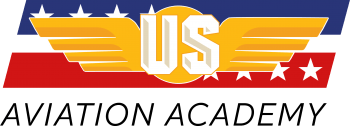Three Types of Aircraft Mechanic Professionals
The aviation industry is a fulfilling and fruitful field to work in. Helping people get to far-off destinations all over the world or just a small jump across states, aircraft maintenance professionals play a vital role in getting people where they need to go while working with one of the most technically advanced machines in existence.
The US Aviation Academy wants anyone who is passionate about aviation or is mechanically inclined to consider a career as an aircraft maintenance professional. First, though, you need to know what job options are available in this rewarding field.
Airframe and Powerplant Mechanics (A&P)
The most common form of licensure, A&P licensure, allows mechanics to work on both the airframe and the engine of the aircraft. To become an A&P, technically, two different licenses are required:
- Airframe Mechanic: An airframe mechanics license permits a mechanic to perform work on the body of an aircraft. This entails inspecting and repairing the body of the plane but excludes the engine, propeller, and avionics.
- Powerplant Mechanic: A powerplant mechanics license grants a mechanic permission to work on the engine of the aircraft.
Earning both licenses is not a requirement designated by the FAA, but it’s common for a mechanic to do so because employers prefer their employees to be capable of performing tasks from both licensures.
Obtaining an A&P certificate grants you the designation of Aviation Maintenance Technician from the FAA and opens up opportunities to work a variety of jobs with airplanes. After that, mechanics can gain experience and explore what kinds of work they enjoy before starting on a specialization.
Inspection Authorization Mechanic
An Inspection Authorization Mechanic (IA) is a special endorsement offered by the FAA to experienced A&P mechanics. IAs allow mechanics to inspect airplanes or airplane engines to ensure they’re ready to go back into active service following a major repair.
Of course, the responsibility of inspecting a plane before it partakes in flights with passengers is a major liability. The FAA reserves this designation for professionals who’ve already received an A&P certificate and are looking to build upon their skill set.
To meet the requirements needed for this endorsement, mechanics must:
- Have had their A&P certification for a 3-year minimum and have been actively maintaining aircraft for the previous 2 years.
- Have a set base of operations.
- Have access to all the tools required for inspections.
As long as these requirements are met, impending IA mechanics need only to pass an exam and complete ongoing training.
Avionics Technician
The avionics technicians are the capable professionals who perform maintenance and repairs on the aircraft’s electronic instruments. These instruments include radio communications devices/instruments, radar systems, and navigation guides. Each of these electronic systems plays an important role in allowing pilots to communicate with fellow pilots and towers, navigate safely, monitor the state of the plane, and more.
Any one of these systems failing can lead to a hazardous situation, so it’s necessary to have well-equipped professionals to maintain and fix them.
Get Started Today
The US Aviation Academy offers a 12-month accelerated training A&P to equip students with all of the training needed to receive their A&P Certification. With hands-on experience working with US Aviation’s fleet of over 120 live, flight school aircraft, we instill a profound understanding of aircraft into each of our students.
We want to ensure that everyone who is passionate about this field has an opportunity to work in it. That’s why we provide aviation maintenance financing options to help you get to your goals.
If you’re ready to immerse yourself into the aviation maintenance world, start your application today!
